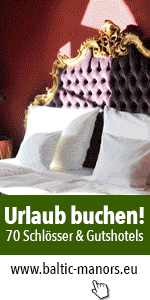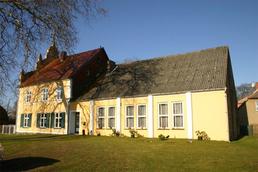Deutsche Website
So that your dream does not become a nightmare

A real estate portal dedicated to castles and manor houses in Mecklenburg-Vorpommern and Brandenburg that supports you in every phase of your project's development.
Manor House Behrenshagen
Behrenshagen was first documented in 1289 and was under the ownership of the feudal noble von Mörder family.
The Daskower line of the von Mörder family died out in 1702. The Daskow estate which the Behrenshagen manor house was once a part of went to the Mützkower branch of the von Mörder family. This branch died out on 1730. The estate, after arguments between the von Bülow and von Plüschow heirs, went to the von Kahlden family in 1755 and finally in 1779 to the von Lilienanker family. Karl Wilhelm von Stumpfeldt acquired the Daskower estates through inheritance in 1842 and put himself under the obligation to his rich childless aunt to take the name of Stumpfeldt-Lilienanker from then on. The Behrenshagen estate was under the ownership of the von Stumpfeldt-Lilienanke family and tenanted by the Büchsel family until 1945.
The Behrenshagen manor house which, as the residence of the squires was strongly connected with the economic position of the estate, was used by the Stumpfeldt-Lilienanker family as the main residence until the building of the new house in Daskow in 1908. The older parts of the manor house were presumably extended with stories added to them by Karl Wilhelm von Stumpfeldt-Lilienanker in 1850. The idiosyncratic building style can be traced back to financial difficulties. The original house, a half-timbered building with dormer windows, simply had stories added to it on the left side and an imposing new Neo-Renaissance pediment on the south-west side. The exterior appearance of the Behrenshagen manor house has been formed by two different buildings since then. The height difference was not altered again. The newer part of the house was demolished in 1960 and rebuilt as a cultural hall for the then agricultural production cooperative.
Nine refugee families inhabited the Behrenshagen manor house after the end of World War II. The two to six person families were put in one room or a chamber. The house was not equipped for so many people, as there weren’t enough kitchens and toilets. So sanitary facilities were built in the park, diverse sheds and various garden parcels. These garden parcels and sheds were still being used by individual tenants up to the 1980s. Following that they were largely left to themselves until the property was sold to the Siebenbürgen family in 1998. The part of the park which had not been urbanized served as an illegal rubbish dump. Only connoisseurs and people interested in the park could recognise it as a work of garden art. The house itself badly needed renovation with a leaky roof, rotten floors in the ground floor and damp walls.
In 1998 an inconspicuous advertisement offered the manor house near Ribnitz for sale. The Siebenbürgen family first saw this small enchanted place on a sunny day in May. They fell in love with the house at once, the park which one could only guess it was there and the history which you could sense. After looking for years, they then knew that they had arrived and dared to go on this unknown adventure. The notarized contract of sale had been signed within only four weeks. Full of verve and with a zest for action, they began a painful, full of detours but unflinching renovation which lasted years, helping the family to be ready to fulfill their dream. Love grew out of infatuation. The spirit of Goethe gave them strength on their path: “Even the stones placed in one’s path can be made into something beautiful.” The manor house was brought to life again. It radiated all its former charm and lit up the countryside with its Renaissance pediment. The upper floor has been completely renovated and serves as a private residence for the family. The ground floor is currently being renovated, whereas the reception hall and the piano room are already used for readings, exhibitions and concerts. The Behrenshagen manor house is listed. You can feel cultural history in it and with it. The same view of the same object links the Siebenbürgen family to their predecessors with whom they feel a deep spiritual kinship. Behrenshagen is a place of peace and quiet – a place to linger and stroll under old trees.
The manor house and the park is cultural greatness in the coastal land. Regular events invite culture and history lovers to “stroll under old trees” from April to October. The historical park which was created according to plans by the landscape architect Lennè borders the manor house. You can find a description under Gardens and Parks.




